Introduction
People do not like to wait.
Whether it is a video buffering, an AR object is messy, or a mobile game lagging in the mid-game, any delay can feel like a failure.
And in today’s world of real-time everything, users won’t stick around. They expect instant. Always.
That’s why 5G mmWave isn’t just exciting, it’s essential. It’s the turbocharger for tomorrow’s apps, and mobile game developers are already taking notice.
We’re talking about ultra-low latency, lightning-fast downloads, and mobile responsiveness that feels… effortless.
But don’t just take our word for it. The 5G mmWave market is scaling fast. In 2024, it was priced at $ 3.38 billion. This number is expected to reach $ 3.85 billion in 2025.
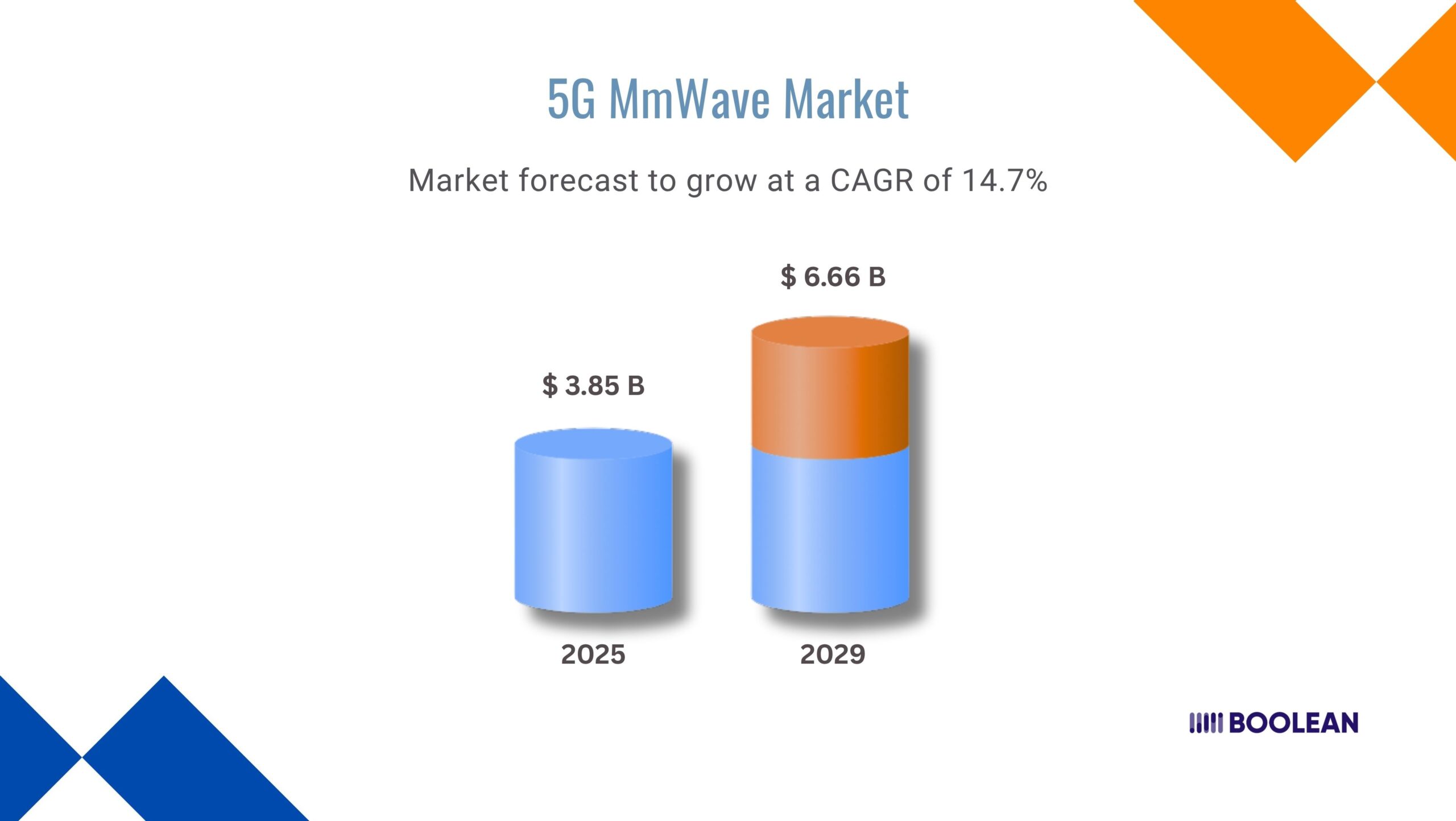
And by 2029? It’s projected to hit $6.66 billion, growing at an impressive 14.7% CAGR.
That growth is being driven by demand. Demand for cloud gaming without lag, AR shopping experiences that actually work (making businesses ask “what is AR in business” and how it can transform their operations), mobile video calls that don’t freeze, and apps that respond the moment we touch them.
And behind all of that is one expectation: zero delay.
But here’s the thing, this new world doesn’t just happen by accident. It has to be designed for. Carefully. Intentionally. Whether you’re working with app design New York teams or developers anywhere else, the principles remain the same.
If you are making apps today, then you need to understand what the 5G mmWaves bring to the table. You need to know that edge computing, low-lonely networks, and real-time UX designs can work together to create apps that feel alive.
Because soon, anything slower than an instant will feel broken.
Let’s dive in. Let’s unpack how to design for 5G mmWave and how to build experiences that move at the speed of now.
What is 5G mmWave?
Imagine downloading a full HD movie in seconds. Or joining a live AR event that feels smoother than reality.
That kind of speed and responsiveness? It’s possible because of 5G mmWave.
So, what exactly is it?
5G mmWave (small for millimeter wave) is the ultra-high-frequency part of the 5G architecture. It works on radio waves that are very few, and very fast, which we use in the old network.
This is the biggest reason 5G seems to be so different. It’s one of the most exciting new computing innovations we’ve seen in years.
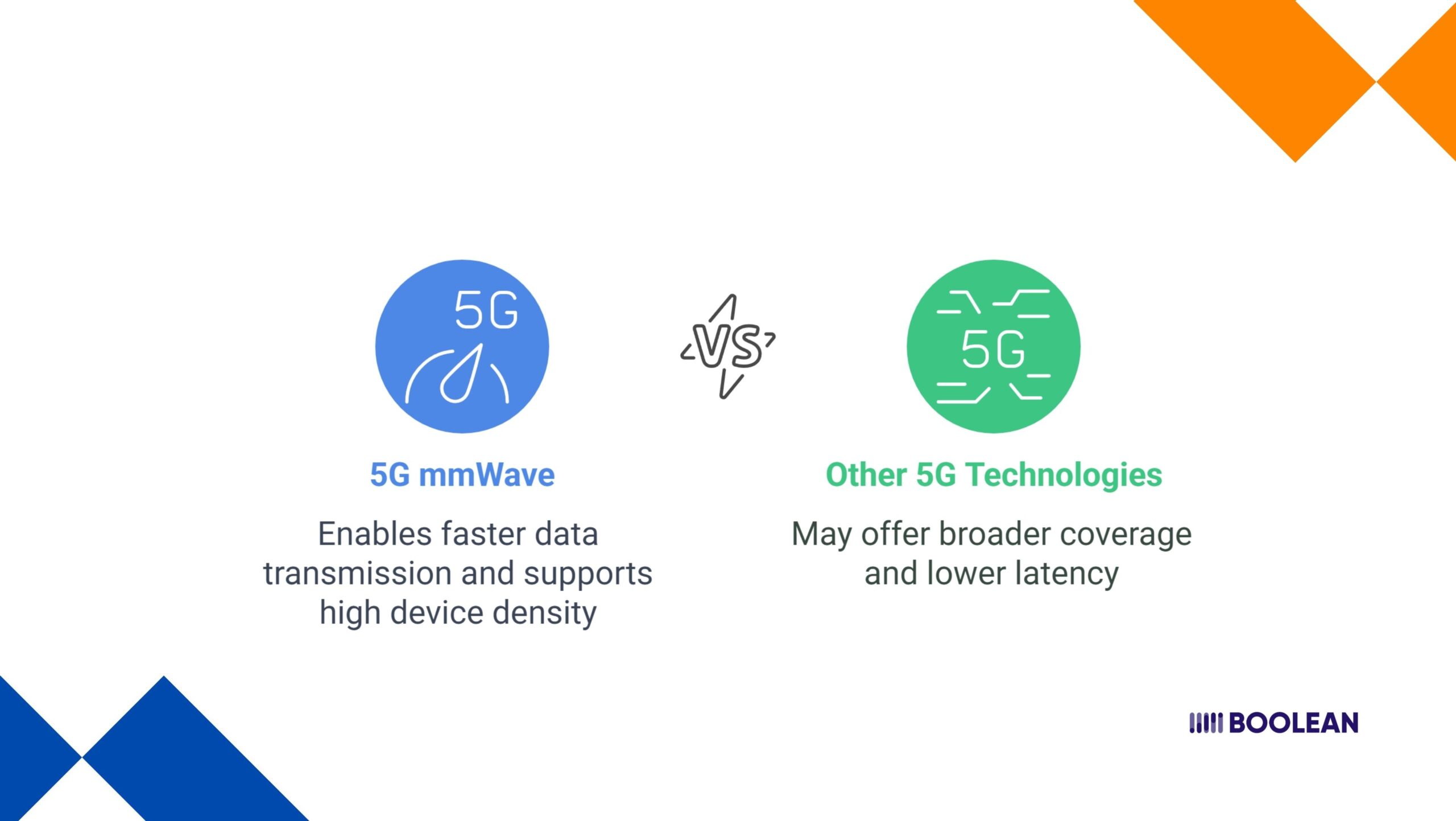
With mmWave Tech, we are talking about incredible bandwidth, ultra-low delay, and data that travels so fast that it seems hard that it seems to be delayed.
It is perfect for things such as low-latency streaming, cloud gaming (where mobile game companies are investing heavily), real-time data apps, and emergency AR or VR experiences.
But here is the catch: mmWave Signal does not travel far away. And they don’t do well with obstacles like walls. That’s where mobile edge computing comes in.
Instead of sending every request way out to the cloud, edge computing keeps data processing close to the user, right at the edge of the network.
This is how apps get that instant response feeling. It’s how mobile app performance gets a serious boost, especially when following a mobile first approach.
Think of it like having a mini data center just down the street, instead of across the country.
Together, mmWave technology and edge computing form a powerful combo. They’re the backbone of many new 5G use cases, from live video apps to smart city tools, to 5G mobile apps built for real-time everything.
If you’re building apps for the future, understanding mmWave latency and its potential is your starting line.
So, Where Does mmWave Actually Fit In?
Okay, now that you know what 5G mmWave is and why it is such a big thing, it is important to keep in mind here: that mmWave is not working alone. It is part of a large network puzzle.
Because mmWave signals are super fast but do not travel very far (and struggle with walls), they need help from other parts of the 5G network, such as sub-6GHz 5G and even good old 4G LTE.
These other layers are filled in intervals, and when mmWave is not available, it keeps running things smoothly.
Imagine this kind of: mmWave is a sprinter, sub-6GHz is a marathon runner, and LTE is a security trap. Together, they ensure that your users stay connected whether they are walking on a busy road or at home.
👉 In the image, you can actually see this – how macro cells and small cells combine to create a strong, reliable coverage area.
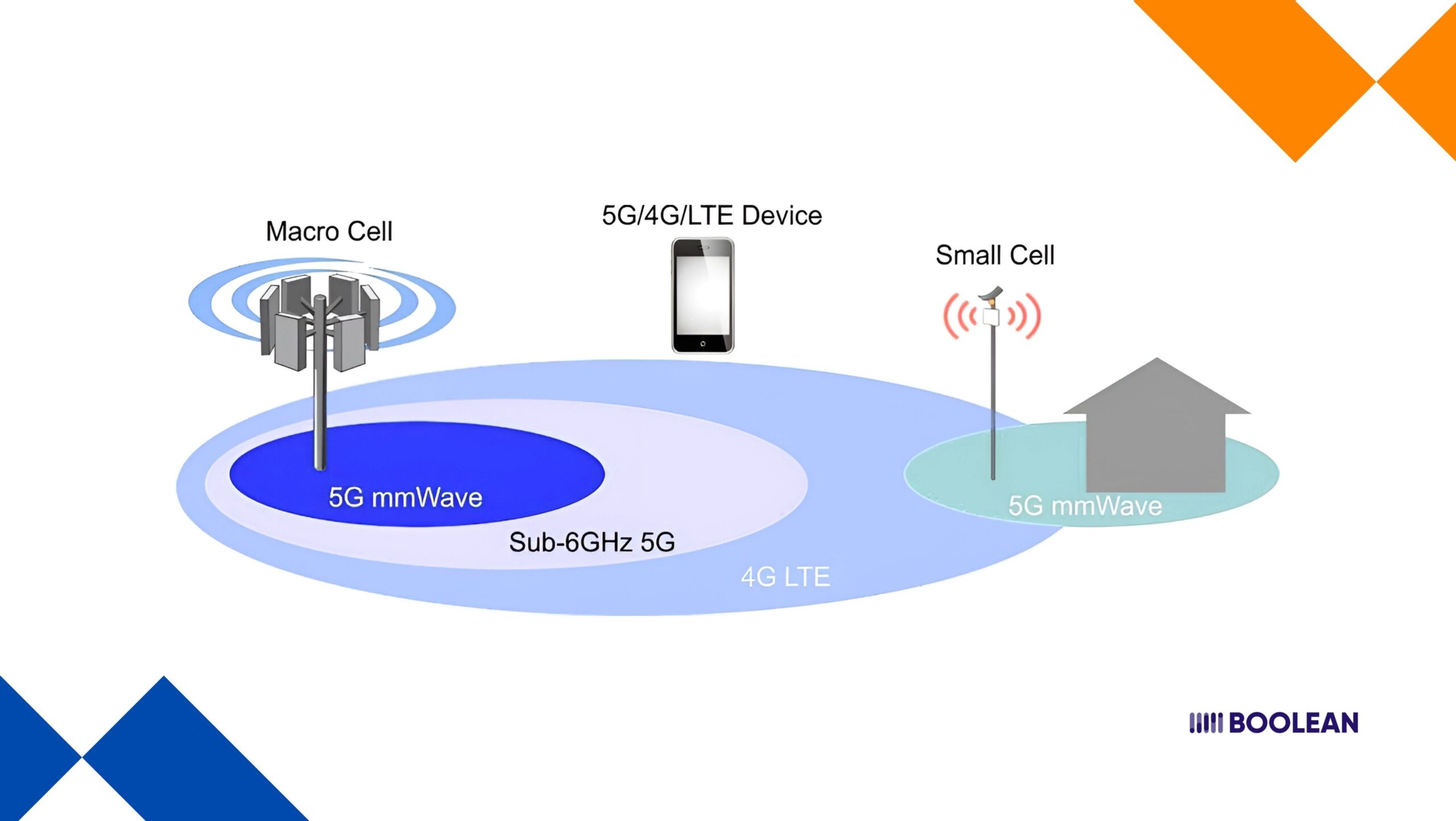
Keeping Things Smooth While Your Users Move
Here’s where things get really interesting because users don’t just stand still. They move around. A lot. So your app needs to be handled without hiccups.
Fortunately, the 5G network is designed for this. It is smart enough to switch your user’s device from mmWave to sub-6GHz or LTE, often without them.
This means that your app can distribute the interaction of real-time data, streaming, or without legs or buffering-only one walks in a building or hops on a train. This seamless transition is crucial for technology gaming experiences that demand constant connectivity.
👉 The image shows how it works, moving through zones. It is spontaneous mobility, and it allows your app to shine, even when leaving.
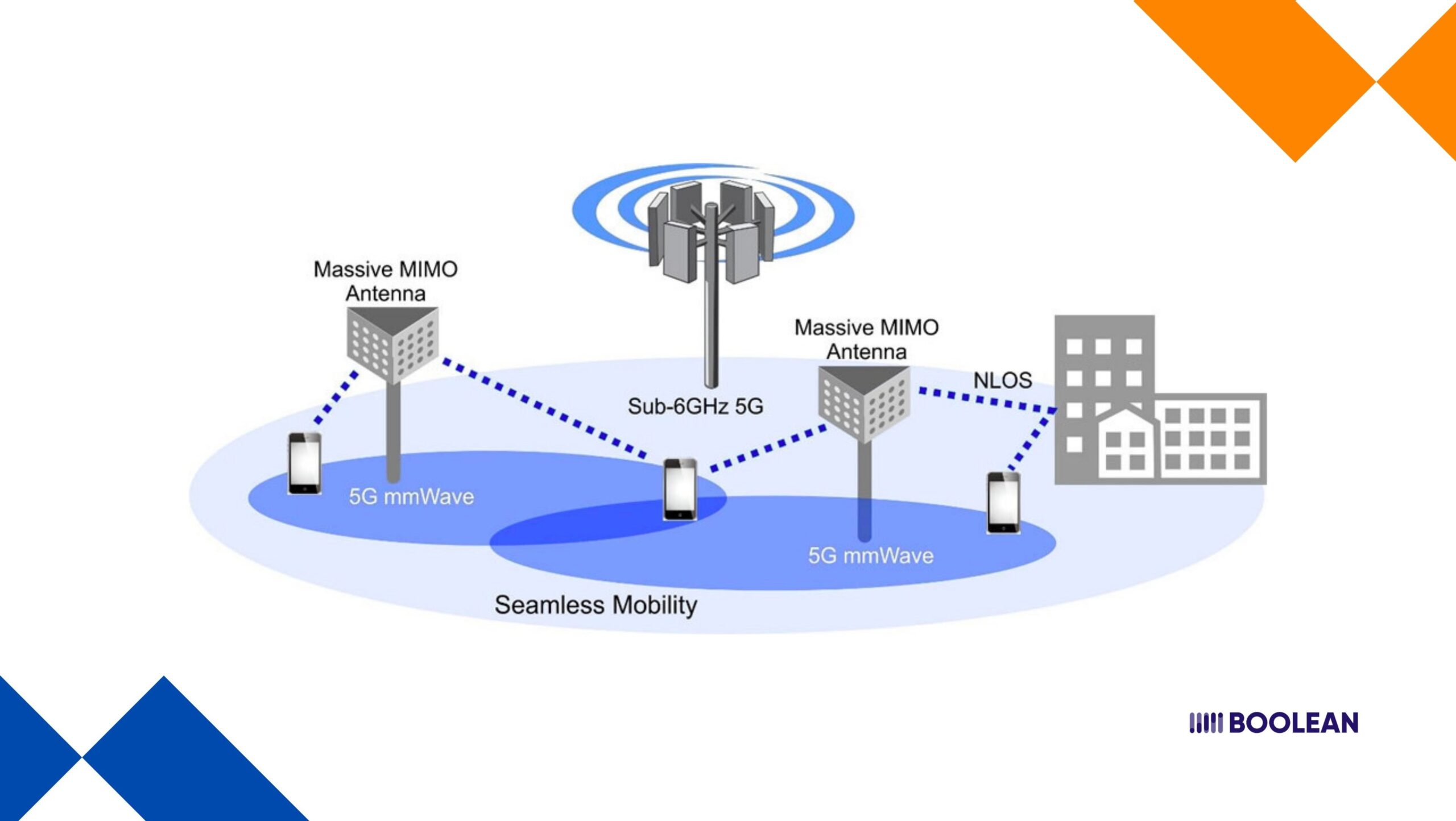
What is Ultra-Low Latency and Why It Matters
The speed is great. But responsiveness is what realizing that when your app reacts immediately.
What is this ultra-low delay?
In technical terms, the delay is the time when the data travel from one point to another.
In real life? This is a delay between your action and the response of the app.
Tap a button. Stream a video. Proceed through an AR view. If the app reacts immediately, it sounds magical. If it falls behind even a second, confusion breaks.
With 5G mmWave, the delays can fall below 10 milliseconds and sometimes reduce to 1 ms. It is faster than most people.
This isn’t just a speed upgrade. It’s a shift in how apps behave.
Ultra-low latency enables low latency streaming, real-time data apps, and 5G augmented reality to feel natural. It powers mobile gaming with zero lag.
It allows live collaboration, instant feedback, and mobile apps that respond as quickly as we think.
But it doesn’t happen on its own.
Behind the scenes, technologies like mobile edge computing are doing the heavy lifting. Instead of sending requests across a massive network, edge tech keeps the processing nearby.
That cuts down on delays and improves mobile app performance in a big way.
This is why 5G architecture isn’t just faster, it’s smarter. Especially when paired with mmWave technology.
And it opens up a huge range of 5G use cases. Think:
- Real-time traffic updates in smart city apps
- Instant object recognition in AR shopping tools (for those wondering how to make an augmented reality app, this is the foundation)
- Lightning-fast input in VR and mobile gaming
- Even 5G and machine learning models that process live sensor data on the edge
For developers, this means we’re not just designing apps, we’re designing experiences. And those experiences have to work in real time.
So whether you’re building for 5G mobile, working on 5G software development, or optimizing for mmWave latency, this is the question to ask:
“What happens if my user has to wait… even a little?”
Because with 5G mobile architecture and the power of mmWave tech, your app doesn’t have to make them wait at all.
The Role of Mobile Edge Computing (MEC) in Achieving Low Latency
Modern users expect apps to work the moment they tap. No delays. No awkward pauses.
To meet that expectation, we need more than just fast networks. We need smart infrastructure behind the scenes, and that’s where Mobile Edge Computing (MEC) comes in.
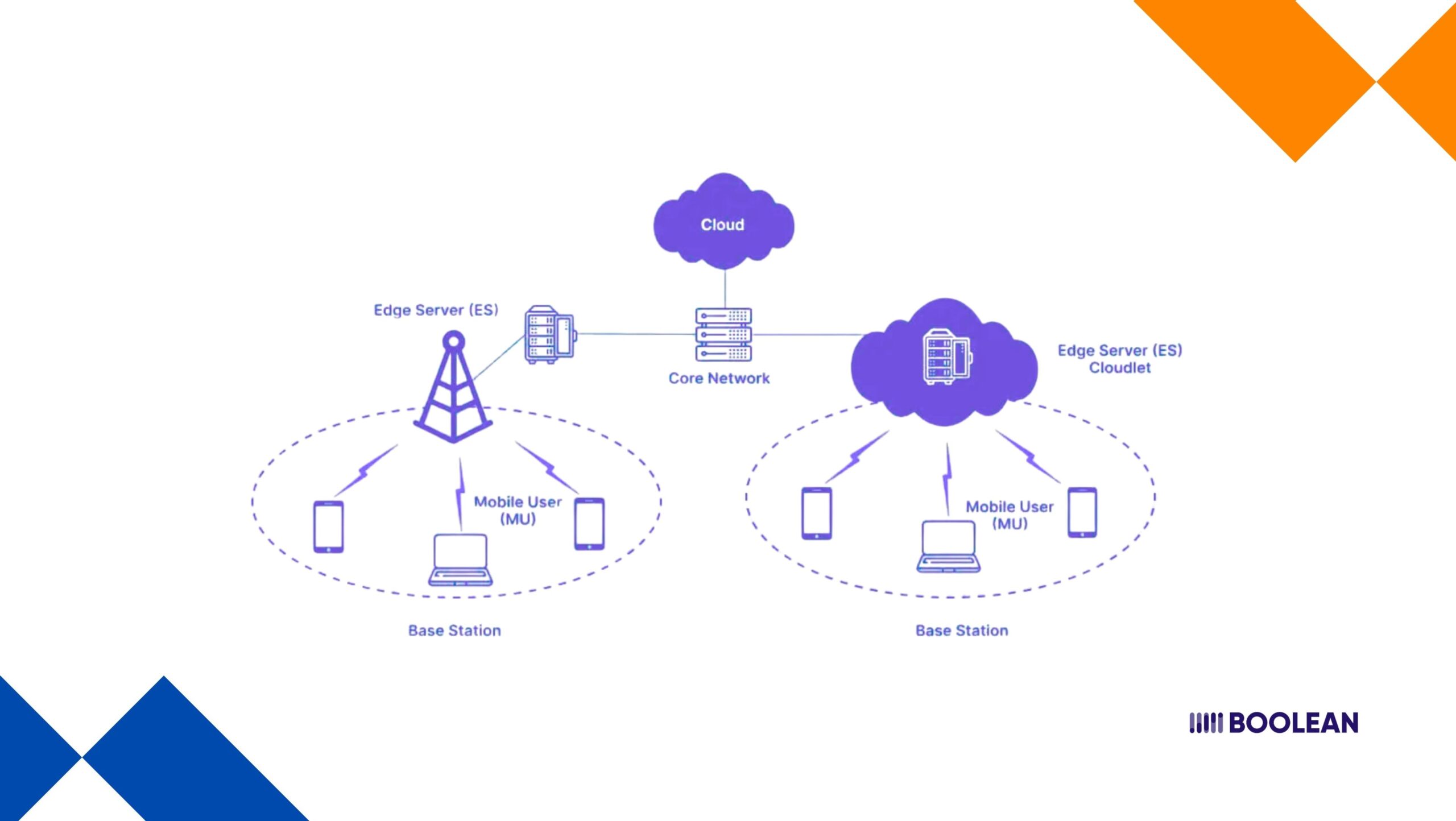
What Is Mobile Edge Computing, Really?
Think of MEC as a shortcut for your data.
Normally, when your app sends or receives data, it has to travel long distances, bouncing between cell towers, backend servers, and central clouds. Every stop adds a little delay.
With mobile edge computing, that journey gets drastically shorter. MEC brings computing power closer to where users are. Right at the “edge” of the network.
The result? Ultra low latency and faster response times, even for demanding apps like cloud gaming, low latency streaming, or real-time AR.
Read Also: AR and VR Trends in Mobile Apps: What`s Shaping the Future
How MEC Works with 5G mmWave
Now pair that with 5G mmWave, and things get really exciting.
5G mmWave delivers insane speed and bandwidth, but it works best over short distances. That makes it the perfect match for edge computing.
Together, they form a supercharged layer of the 5G architecture, delivering performance that feels instant.
You get smoother video calls, seamless 5G mobile apps, and interactive features that respond before you even finish tapping.
This kind of responsiveness is especially important in emerging 5G use cases like:
- Remote surgeries
- Smart factory automation
- AR-based shopping
- Live event streaming
- Hyper-personalized mobile experiences
- Even new technology in oil industry applications for remote monitoring and control
Why It Matters for Developers
For developers and teams building on top of modern 5G mobile architecture, MEC is more than a technical layer; it’s a design opportunity.
By keeping data local, MEC improves:
- Mobile app performance
- Mobile responsiveness
- And even mobile network optimization
You’re not just building faster apps. You’re building smarter, more reliable ones, that users can trust even in high-demand, high-traffic situations.
New Possibilities at the Edge
MEC doesn’t just reduce latency, it opens up new doors.
Imagine these advanced features powered directly by the edge:
- Real-time edge AI in mobile apps, making decisions on the fly.
- Composable architecture that adapts to network conditions.
- Smooth UI animation that never stutters.
- Flexible, intuitive multimodal UI in mobile apps that blend voice, touch, and gesture.
- And enhanced safety by integrating zero-trust mobile security right at the edge
With these tools, developers can create experiences that feel alive, always ready, and always responsive. Tools like Vuforia AR SDK are already leveraging these capabilities to create stunning AR experiences.
It’s how we unlock the true potential of 5G mmWave. It’s how we deliver apps that respond like magic. And it’s how we meet the expectations of a world that doesn’t want to wait.
Design Considerations for 5G mmWave-Ready Apps
Designing for 5G mmWave isn’t just about making things faster. It’s about making things feel effortless.
With ultra low latency, mobile edge computing, and a powerful 5G architecture, we’re no longer limited by old network delays.
But to take full advantage of this, the apps need to be designed in different ways – deliberately.
For example, if you are creating something like cloud gaming or live streaming, every millisecond matters. A small hiccup and a complete experience may be different. That’s why performance tuning matters so much in this space.
You’ll want to:
- Keep heavy processing near the user using edge computing.
- Reduce unnecessary network calls.
- Streamline data flow for a low latency network.
- Design for movement, because 5G mobile users are always on the go.
Even the layout and flow of your UI should support mobile responsiveness. Smooth transitions. Instant reactions. No spinning wheels.
Remember whether you are working on matters of real-time tools, 5G mobile apps, or brand-new 5G use:
Speed gets attention. But responsiveness earns trust.
Build for both.
Use Cases That Benefit Most from 5G mmWave
Not every app needs blazing-fast speeds, but for some, 5G mmWave changes everything.
Think cloud gaming, low latency streaming, and live video apps. These rely on real-time responsiveness, where even slight delays ruin the experience. With ultra low latency, they run smoother than ever.
Apps using mobile edge computing for tasks like real-time data processing, AR navigation, or VR training also shine here. Fast, local computing plus 5G mobile architecture means near-instant reactions.
In smart cities, 5G mobile apps help with traffic control, public safety, and real-time alerts. And in healthcare? Think remote monitoring or even assisted surgery, where milliseconds matter.
Whether it’s mobile network optimization, 5G and machine learning, or mobile responsiveness for users constantly on the move, 5G mmWave unlocks use cases that weren’t possible before.
Real-World Examples of 5G Mobile Apps Using mmWave Tech
Let’s look at where 5G mmWave is already making a real impact.
In motorsports, some broadcasters are using low latency streaming over mmWave to deliver live, multi-angle race feeds directly to mobile viewers with zero lag.
It’s all about speed and responsiveness, exactly where 5G mobile apps shine.
Gaming companies have also stepped in. Several cloud gaming demos now use mobile edge computing and mmWave tech to render complex game graphics remotely, and then stream them to smartphones with minimal delay.
That’s high-performance gaming; no console is required.
In industrial settings, 5G architecture enables precision control of machines through mobile devices.
With ultra low latency, technicians can monitor, manage, and even adjust robotics in real time.
And for AR fans? A few 5G augmented reality apps are already using mmWave technology to overlay digital content instantly onto the real world, perfect for smart shopping, live events, and more.
These aren’t future concepts. They’re happening right now, powered by low latency networks, smart design, and the full strength of 5G mobile.
Live Racing with Samsung & SK Telecom
At the Korea International Circuit, Samsung and SK Telecom used 5G mmWave to stream live video directly from racing cars in a race of more than 130MPH.
With the download speed up to 1GBPS, the audience enjoyed real-time, multi-angle streaming, VR/AR overlay, and immersive race feed.
👉 Dive deeper into their official press release.
Tips to Optimize App Performance for mmWave Networks
Building for 5G mmWave is a big opportunity, but also a big responsibility. Because with all that speed and power, users expect one thing: everything to just work.
Here’s the good news: you don’t have to start from scratch. A few smart design choices can go a long way in improving mobile app performance, especially on low latency networks.
Let’s break it down.
| Optimization Area | What to Do | Why It Matters |
|---|---|---|
| Data Handling | Minimize backend roundtrips, compress data | Reduces load time and network usage, ideal for ultra low latency apps |
| Edge Integration | Use mobile edge computing for real-time functions | Keeps performance consistent and fast, especially in 5G use cases |
| Adaptive Streaming | Implement bitrate switching for low latency streaming | Maintains quality even in changing 5G mobile signal conditions |
| AR/VR Responsiveness | Optimize frame rates and input sync in AR apps and VR mobile | Delivers smoother user experiences using mmWave tech |
| Network Awareness | Detect and respond to changes in 5G architecture and network strength | Helps with fallback strategies and mobile responsiveness |
| UI/UX Design | Prioritize instant load and visible feedback | Builds trust through fast interactions on high-speed 5G mmWave networks |
| Security at the Edge | Add zero-trust mobile security near the edge | Keeps user data safe without adding latency |
Bonus Tips:
- Cache smarter. Save data closer to the user whenever possible.
- Use a composable architecture so features scale or shift based on connectivity.
- Monitor mmWave latency in real-time and tune performance dynamically.
Conclusion
5G mmWave isn’t just a buzzword; it’s a real shift in how mobile apps work and feel.
We’re talking about a world where live streaming doesn’t lag, where cloud gaming feels local, and where AR apps respond instantly.
Thanks to ultra-low latency, mobile edge computing, and smarter 5G architecture, we can finally build apps that feel as fast as users expect them to be.
But the great speed matters only when the experience saves. This is where your design options come.
The way your app handles the data, reacts to touch, and the changing network is conducive to situations – it all shapes how people feel when they use it.
Future? It is not coming – it is already here. 5G mobile is live. mmWave Tech is active. And people are looking for apps that can keep.
If you take care, intentions, and performance into account, your app does not work on just 5G – it will grow.
FAQs
- What makes 5G mmWave different from regular 5G?
5G mmWave delivers ultra-high speeds and ultra-low latency, but only over short distances. It’s ideal for dense, high-demand areas like stadiums or city centers, and perfect for low-latency streaming and real-time apps.
- Can my mobile app really benefit from 5G mmWave?
Yes, especially if your app involves cloud gaming, AR experiences, live streaming, or fast data sync. Mobile edge computing and 5G architecture help make it all faster and smoother.
- What’s the biggest challenge when designing for 5G mmWave?
Managing performance across varying signal strengths. That’s why apps need adaptive design, network awareness, and mobile responsiveness built in.
- Is 5G mmWave available everywhere?
Not yet. It’s being rolled out in high-traffic areas first. But as 5G mobile networks expand, so will mmWave coverage, especially in smart cities and tech-forward regions.
- How can I prepare my app for 5G mmWave today?
Focus on optimizing latency, reducing backend calls, and leveraging edge computing. Also, consider scalable 5G software development and real-time data apps strategies.







